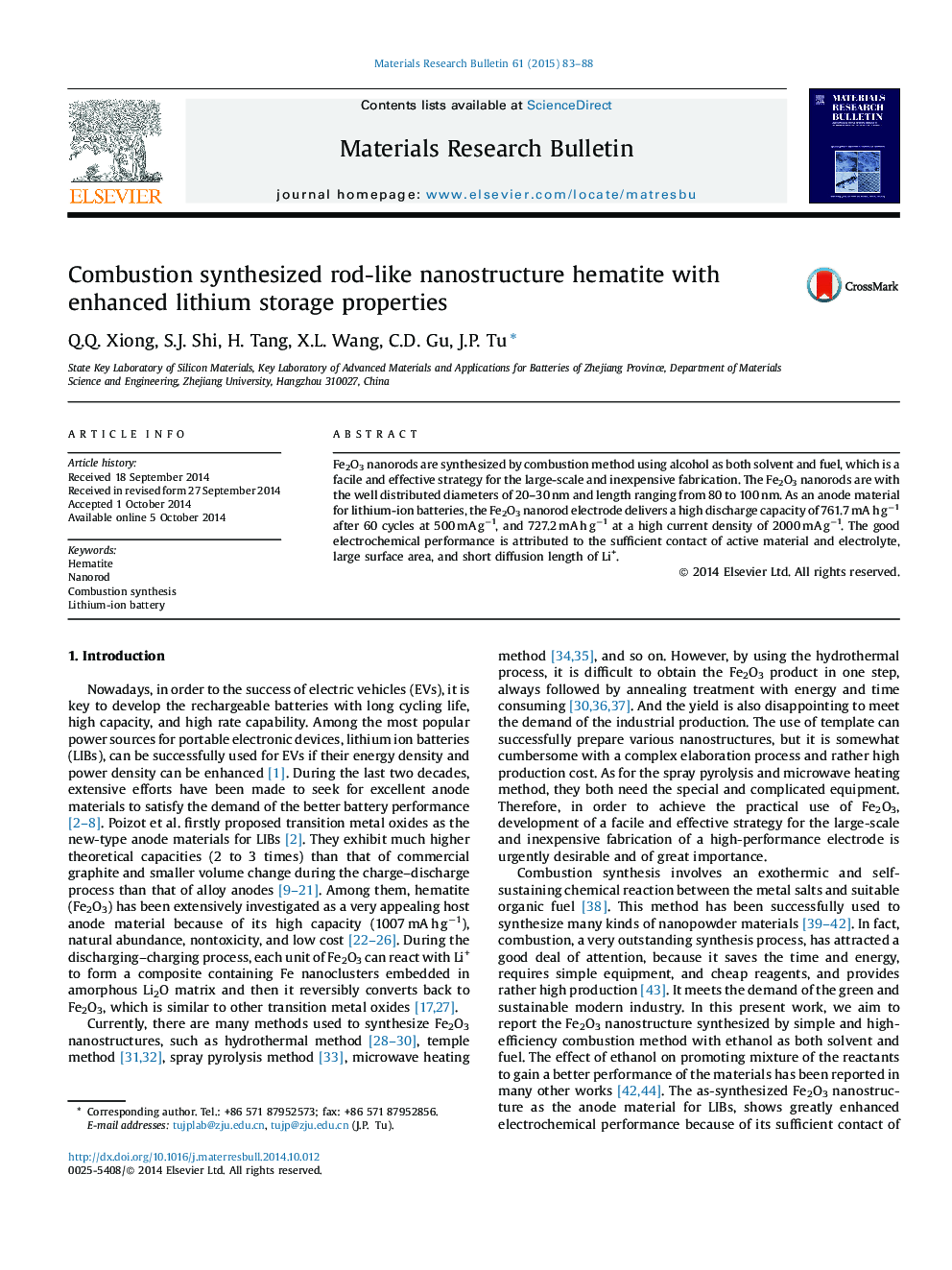| Article ID | Journal | Published Year | Pages | File Type |
|---|---|---|---|---|
| 1488075 | Materials Research Bulletin | 2015 | 6 Pages |
•We prepared Fe2O3 nanorod by a facile and powerful combustion method.•The Fe2O3 nanorod shows high capacity, good cycle stability, and rate performance.•Combustion saves time and energy to meet the demand of green and sustainable industry.
Fe2O3 nanorods are synthesized by combustion method using alcohol as both solvent and fuel, which is a facile and effective strategy for the large-scale and inexpensive fabrication. The Fe2O3 nanorods are with the well distributed diameters of 20–30 nm and length ranging from 80 to 100 nm. As an anode material for lithium-ion batteries, the Fe2O3 nanorod electrode delivers a high discharge capacity of 761.7 mA h g−1 after 60 cycles at 500 mA g−1, and 727.2 mA h g−1 at a high current density of 2000 mA g−1. The good electrochemical performance is attributed to the sufficient contact of active material and electrolyte, large surface area, and short diffusion length of Li+.
Graphical abstractFe2O3 nanorods are synthesized by combustion method using alcohol as both solvent and fuel. As an anode material for lithium-ion batteries, the Fe2O3 nanorod electrode delivers good electrochemical performance.Figure optionsDownload full-size imageDownload as PowerPoint slide
